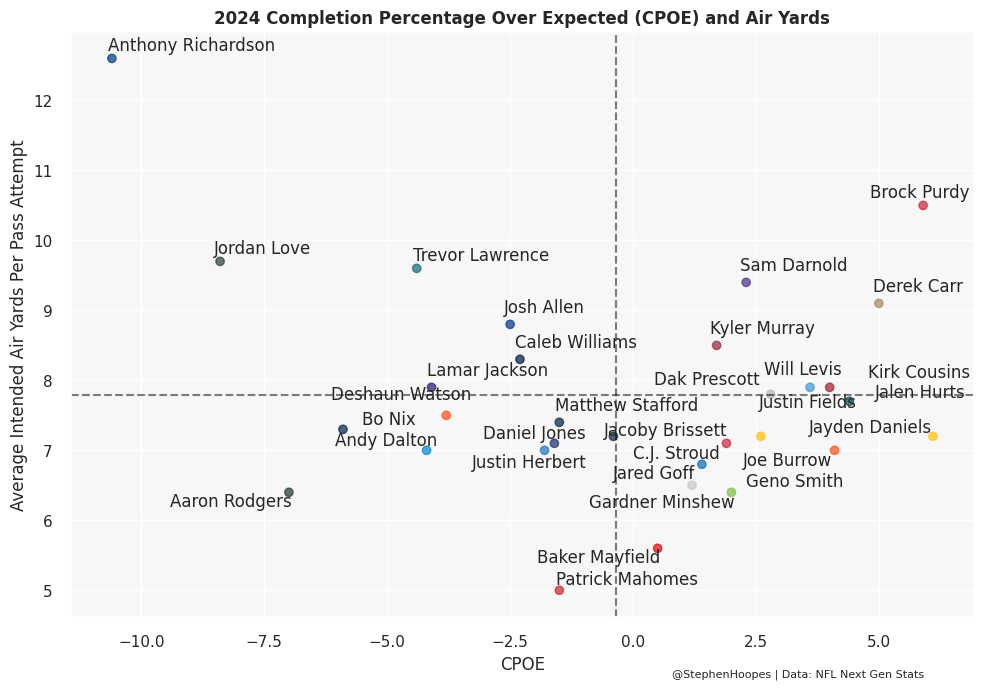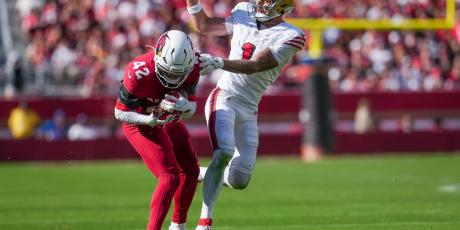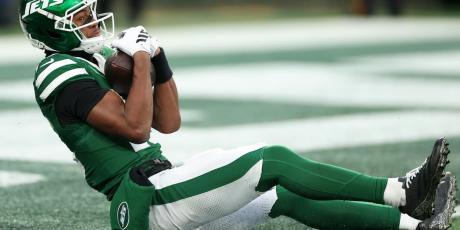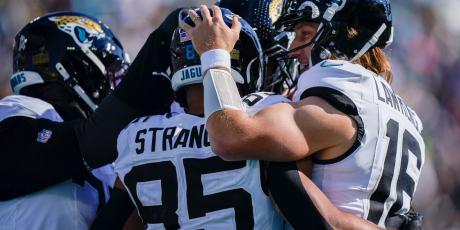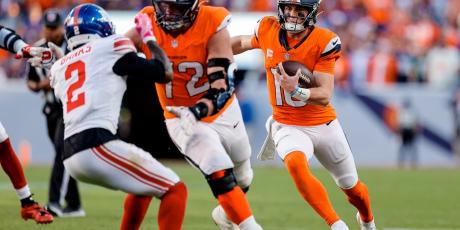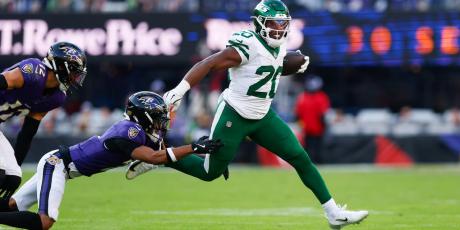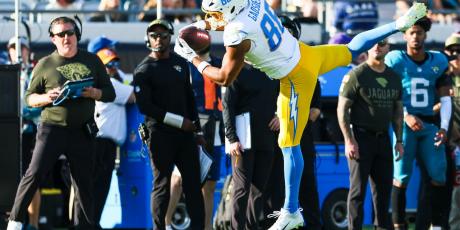10 Things You Need to Know About Week 6 for Fantasy Football
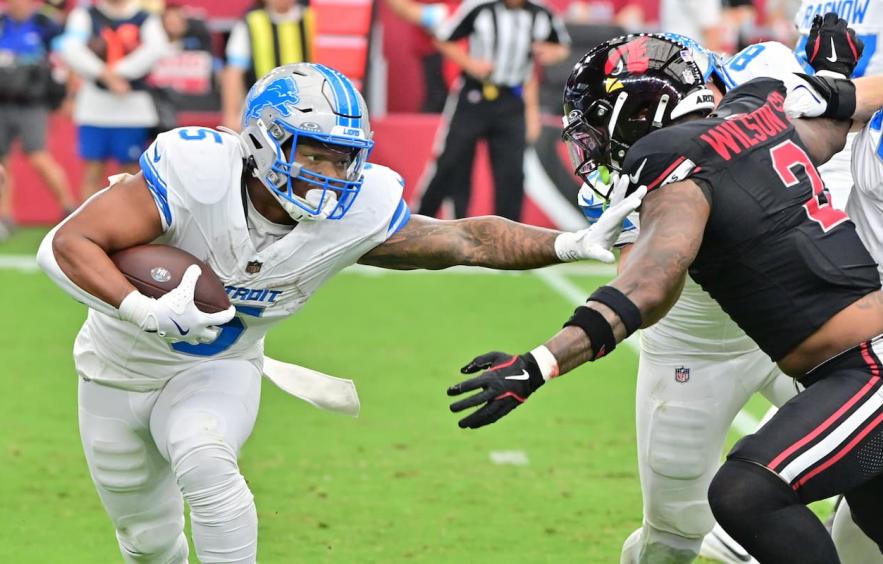
One thing that really improved my fantasy football performance was accepting that I will sometimes look dumb. We spend a lot of time criticizing coaches for being too conservative in their play calling choices, only to do the same exact thing in our fantasy football lineups. This game has a lot of variance (read: luck), and you won’t be perfect. But that shouldn’t stop you from choosing the option with the highest probability of being right. Even if it increases the odds that you’ll look dumb in the process.
So, this is your sign to spend your FAAB on a player with a massive ceiling but no floor. This is your sign to bench Jaylen Waddle for someone you just picked up off of waivers. Because the draft was a long time ago now. Ignore the sunk cost of your draft decisions if the QB play in Miami is atrocious. As is often stated, this is a weekly game, and team matchups are crucial to improve our sit/start decisions. With that in mind, we’ll look at the passing- and run-game matchups for Week 6 below. When in doubt, shoot for the ceiling play even if you wind up hitting the floor.
Week 6 Passing and Rushing Matchups
The graphs below show an offense’s efficiency via EPA on the x-axis and their opponent’s defensive efficiency on the y-axis. And I've split it into two graphs: one for the pass game and one for the run game. In a vacuum, we’d like as many of our fantasy players on teams in the top-right of the graphs. On the passing graph, both the Ravens and the Commanders stand out. And that’s especially interesting because they play each other this week. Given that context, it’s not surprising that the matchup is one of only two games with an expected point total above 50 points.
The other expected 50+ point game is the Cowboys vs. the Lions. On the passing graph, both teams squeeze into the top-right corner. But the Lions are set up with the best rushing spot in the league in Week 6. The Cowboys' defense is the least efficient run defense playing this week, while the Lions are the third-most efficient rushing attack. Both Gibbs and Montgomery are set to crush this Cowboys defense in Week 6.
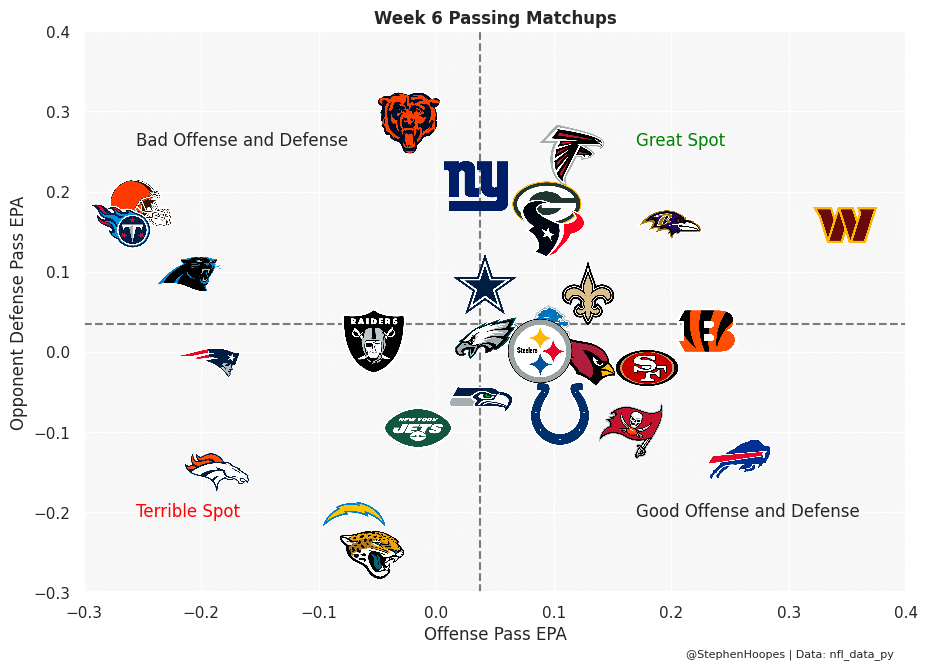

Bengals Selling Out to Stop the Run
As mentioned above, the Commanders' pass defense has its work cut out for it against the Ravens in Week 6. But the Commanders' defense also hasn’t been successful in stopping the run this year. And now they face Derrick Henry and Lamar Jackson. But NFL teams can read graphs too. And in Week 5, the Bengals decided to force Lamar Jackson to beat them through the air (and Lamar obliged).
So, if you’re betting on this game, you’ll need to have a point of view on what the Commanders defense will do. Will they sell out to stop the run like the Bengals or will they try their luck stopping Derrick Henry with lighter boxes? Based on what we’ve seen so far this year, my bet is the Commanders do not sell out to stop the run as aggressively as the Bengals did in Week 5.
The graph below shows the percentage of rush attempts by week where both the Bengals' and Commanders' defenses had eight or more defenders in the box. The Bengals decided they were not willing to lose to the Ravens on the ground. But they also had shown a propensity to load up defenders in the box in previous matchups. Henry got there in Week 5 but largely on one massive run very late in the game. I think he finds more sustained success in Week 6.

Expected Fantasy Points Update
In the Week 3 article, I introduced my expected point tables. I mentioned that I like looking at expected points because they provide insight into whether a player’s actual fantasy scoring is sustainable. That’s what the above/below expected bar graph shows for each player in the tables below. If you’re seeing gray at the end of a player’s bar graph, it means their actual fantasy points have been lower than their expected fantasy points. Theoretically, this makes them a buy-low candidate. The opposite is true if you’re seeing light green at the end of a player’s bar graph. They’ve scored more fantasy points than expected so far.

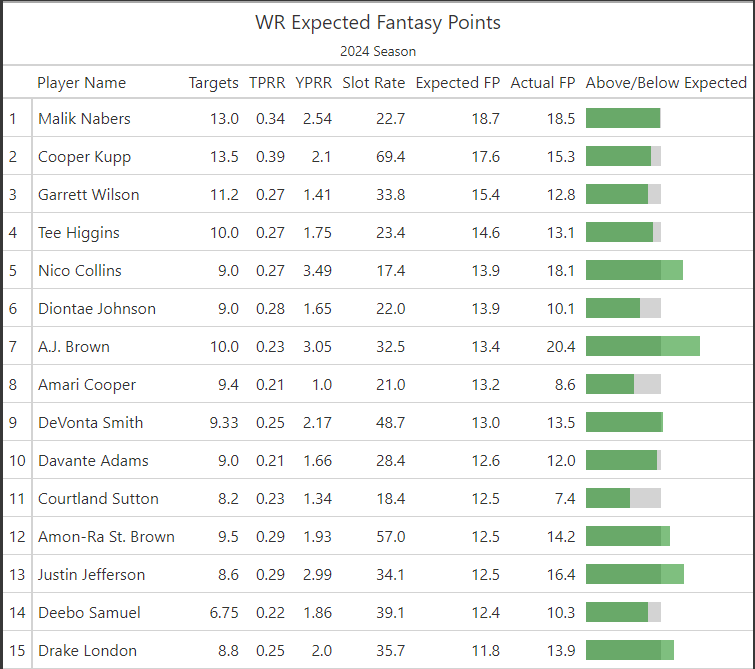
Before Week 3, RBs were crushing WRs in expected fantasy points. Rhamondre Stevenson, Saquon Barkley, and De'Von Achane each had over 19.5 expected fantasy points per game. The closest WR was Malik Nabers at 17.9 points. And while RBs are still beating WRs through five weeks, that top-end has fallen off sharply for RBs. Nabers is now the expected fantasy point leader for both positions. And some highly-drafted WRs like Drake London have turned their season around. Let’s dig into London further.
Drake London Slot Machine
London had easily his best game of the season in Week 5. He finished the week with a 12/154/1 line, marking his second consecutive game of 12+ targets. And his deployment last week was particularly encouraging for fantasy. Ten of his receptions, 135 of his yards, and his touchdown all came when London was running a route out of the slot. He earned over 38% targets per route run (TPRR) while in the slot as well, according to SIS. Especially in half- or full-PPR leagues that reward receptions, we want our receivers to get layup targets over the middle of the field like London did last week.
In addition to his deployment, the environment for the Falcons receivers is also improving. The graph below shows pass rate over expected (PROE) on the x-axis and how much that pass rate fluctuates weekly on the y-axis. For the season as a whole, the Falcons are exactly average in PROE. But that does hide their trend throughout the season. The Falcons were about 9% below expectation in each of the first three weeks. And then that changed sharply, hitting the fifth-highest PROE over the last two weeks. My best guess is Kirk Cousins’ improving health is allowing the Falcons to operate in the way they’ve wanted all along. And this week they get to play the Panthers defense, who have the second-least efficient passing defense on the Week 6 slate. Wheels up for Drake London.
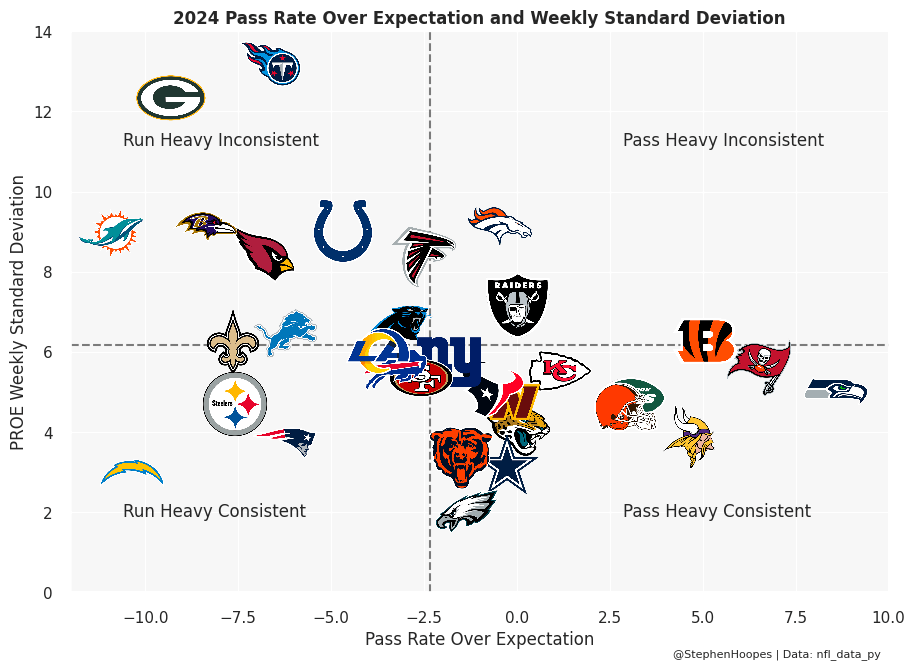
Brock Bowers’ Route Rate
Speaking of deployment, there was concern that with Michael Mayer out the past few weeks, Brock Bowers’ route rate would drop. That he would be expected to stay in and block the opposing pass rush rather than earning us fantasy goodness. And we’ve seen that a bit. He ran a route on 90.3% of his snaps from Weeks 1 through 3, and that dipped to 87.5% in Week 4 and 82.5% in Week 5. His 33 routes last week were only one more than DJ Turner. And the Raiders have called run plays at a higher rate with Bowers on than off the field. They have a 55% called pass rate with Bowers on the field over the last two weeks versus 62% with him on the sideline, according to SIS. Unfortunately, I can’t seem to find a reliable update on Mayer’s projected return date.
But this is all to say that I think there is still meat on the bone for Bowers going forward. Any team should be willing to look at his deployment and say “We need him to run a lot more routes than DJ Turner”. And he’s crushed despite his deployment anyway. According to Jeff Bell, there have been 25 games of 8+ receptions and 97+ yards by rookie tight ends in NFL history. Brock Bowers has two of them through only five games. He’s TE3 in my expected points model, behind only George Kittle and Trey McBride.
Brian Thomas Jr. Dominating
According to Austin Gayle, Brian Thomas Jr. has the third-highest yards per route run (YPRR) of any rookie wide receiver through five weeks since at least 2000. He’s actually slightly ahead of Puka Nacua’s historic season last year. And that is despite some difficult quarterback play this season, as Trevor Lawrence has the fifth-lowest completion percentage over expected (CPOE) among QBs with at least 100 attempts.
The expected points model indicates that he’s a clear regression candidate. He’s over-performing his expected fantasy points by about four points per game. The main issue is he’s only earning 6.8 targets per game through five weeks. But the Jaguars are at least neutral in PROE and Thomas is earning a strong 24% TPRR. Additionally, Thomas has the profile of someone who can exceed expected points through massive TD plays. We saw that in Week 5 when he got home on an 85-yard receiving TD. Players in this mold aren’t typically my favorite, but Thomas obviously deserves some attention.
Justin Jefferson: Penalties Should Give Us Fantasy Points
No one is really feeling bad for Justin Jefferson's managers, but it was a frustrating day in Week 5. He finally got a massive 14-target day, his first game over eight targets this season. But he was only able to corral six of them. Whether this was an explicit strategy or just what ended up happening, I’m not sure. But the Jets' defense decided to hold or interfere with Jefferson on a massive portion of his routes. Jefferson now leads the league in EPA per nullified penalty when he was the targeted player. His 9.4 EPA on these plays is about 3 points above the next closest receiver Davante Adams.
In fact, the five nullified penalties with Jefferson as the target in Week 5 are enough to tie him for second place for the entire season. Assuming that Jefferson Rules don’t become a real thing in the NFL, we should get some more fantasy points from these targets after the Vikings’ bye.
Commanders: Success Running and Against Pressure
The success of the Commanders’ rushing attack has been a bit of a surprise this season. Jayden Daniels was always expected to be a weapon with his legs. But Brian Robinson, Austin Ekeler, and Jeremy McNichols combined for 129 yards and three touchdowns on 20 carries in Week 5, which was good for about 9.0 EPA. Brian Robinson in particular has been efficient, as he’s 13th out of 59 qualifying RBs in RYOE per attempt. The Commanders lead the league in rushing efficiency through five weeks but do get a tough test against the Ravens defense this week.
Jayden Daniels’ success against pressure has been another surprise for the Commanders. Jayden Daniels had an 8th percentile pressure-to-sack-rate (P2S) as a college prospect, meaning that he took an inordinate number of sacks when pressured. And that is typically sticky for quarterbacks like we’ve seen with Sam Howell or Justin Fields. But through five weeks, Jayden Daniels has a completely average P2S, ranking 17th among 30 qualifying QBs with at least 100 dropbacks. QB rating is a flawed stat, but in this instance, I think it represents how well Daniels has been against pressure to start the season. His 110.8 rating is second behind only Joe Burrow among full-time starters.
Tyrone Tracy: Role Expansion?
Following an Eric Gray fumble at the goal line, the Giants turned to Tyrone Tracy in Week 5. And Tracy didn’t look back. He had 18 carries for 129 rushing yards to go along with two targets. The main question is whether he played well enough to eat into Devin Singletary’s role when he returns from injury. I personally hope he does. The graph below shows RYOE per attempt on the x-axis and Next Gen Stats’ version of success rate on the y-axis. I’ve included the qualifying Giants RBs and some other interesting splits like the Bengals and Vikings.
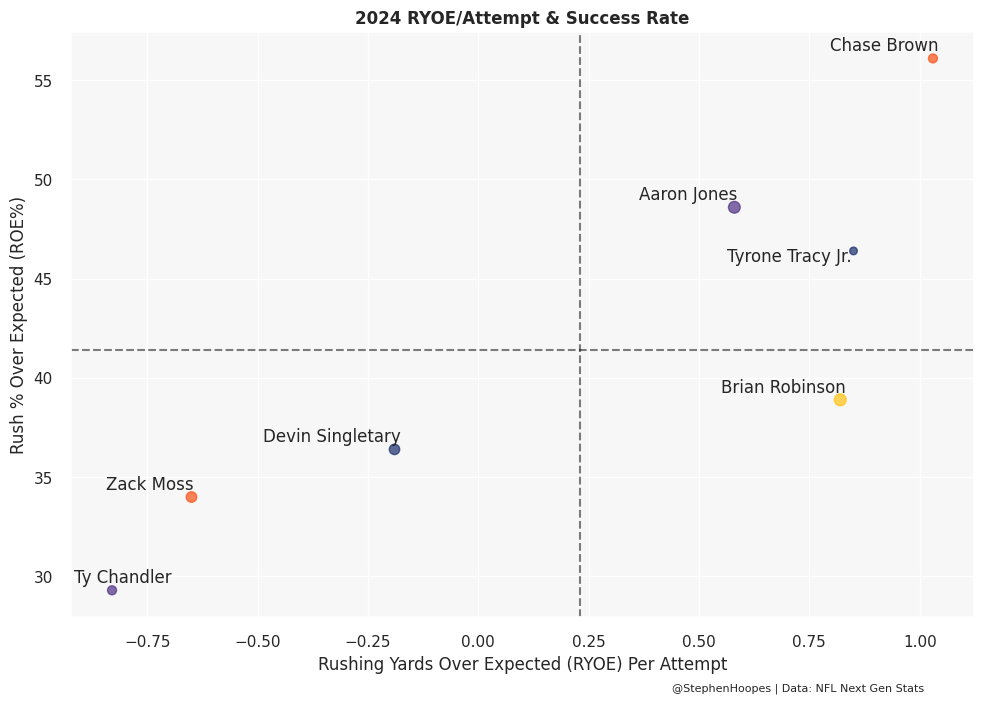
Tracy is crushing Singletary in both RYOE and success rate on a small sample. According to Jacob Gibbs, Tracy is the only RB this season to gain positive yards on every run in a game with at least 15 rush attempts. And he might have the opportunity to expand this lead if Singletary is out in Week 6. The Giants get to play one of the softest run defenses in the league this week in the Bengals. And I can’t imagine the Bengals feeling the need to load the box against Tracy as they did for Derrick Henry. Tracy is a priority add this week with some chance to take over this backfield for the rest of the season.
Bills’ Lack of Receiving Weapons Finally Hurts Them
Josh Allen has been playing MVP-level football in 2024. But Week 5 was a rough outing for both him and the Bills offense. The Bills 29.7% success rate in Week 5 was their worst number since 2018 during Allen’s rookie year. That will happen when you only complete nine out of 30 pass attempts, which was 22.1% below expectation. The absence of Khalil Shakir should not be enough of a reason to tank the Bills’ passing attack.
The graph below shows CPOE on the x-axis and air yards per attempt on the y-axis. After finishing at least 13th among qualifying QBs in each of the first four weeks, Allen finished 29th in Week 5. That one week drops him to 24th among 35 qualifying QBs for the season. According to ESPN Stats & Info, Allen’s 30% completion percentage was the lowest for any QB with at least 30 pass attempts in the last 30 seasons. Some of this is obviously on Allen. Some of this is a credit to the Texans’ defense. But let’s also put Davante Adams on this Bills team and see what happens.
